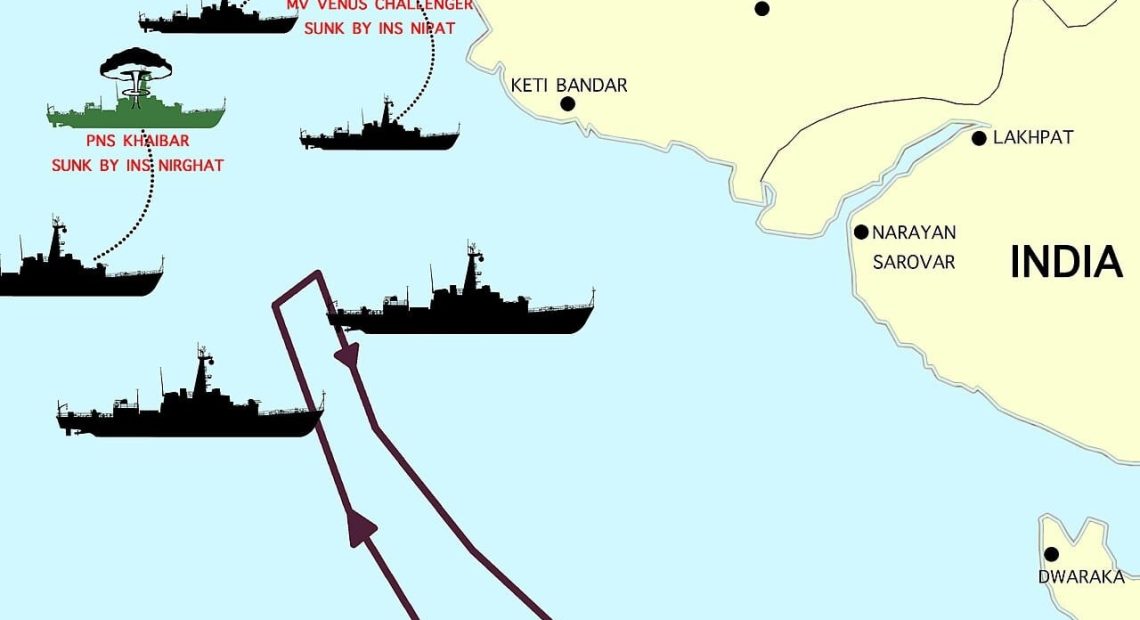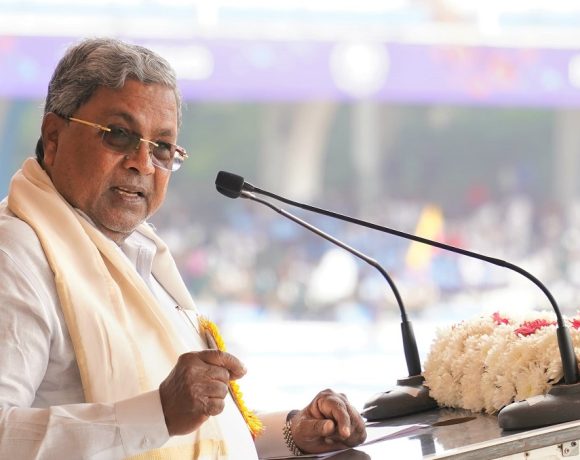
Blockade Over Bullets: Why India Might Strangle Pakistan at Sea After Pahalgam
I. Introduction: The Sea as the Next Front
The brutal Pahalgam attack on April 22, 2025, which claimed the lives of 26 innocent civilians, has left India seething. As public anger mounts and political pressure builds, the question confronting the Indian leadership is not whether to respond—but how. While surgical strikes, air raids, and covert operations have become India’s go-to tools in recent years, there is growing speculation that this time, New Delhi may chart a different course—one that weaponizes geography instead of explosives.
A naval blockade of Pakistan’s economic arteries—Karachi Port and Port Qasim—is being quietly discussed in strategic circles as a measured but high-impact response. Unlike aerial or land-based strikes that trigger immediate military escalation, a maritime blockade delivers a more prolonged, economically devastating message without necessarily firing a single shot. It leverages India’s long-standing naval superiority to cut off Pakistan’s access to global commerce, slowly turning the screws on its fragile economy.
This isn’t just theoretical. India has done it before—decisively and effectively. The sea, once again, might become the theatre where Pakistan faces its most suffocating defeat yet—not with missiles but with maritime silence.
II. Historical Precedent: When India Sank Karachi
To understand the strategic weight a naval blockade carries, one must revisit India’s maritime maneuvers during the 1971 Indo-Pakistani War. At a time when Pakistan’s naval hub at Karachi was considered impenetrable, the Indian Navy executed two audacious and devastating operations—Operation Trident and Operation Python—that not only crippled Pakistan’s western fleet but also paralyzed its maritime trade.
Operation Trident, launched on the night of December 4, 1971, was the first offensive operation of its kind in the Arabian Sea. A task force of Indian missile boats, supported by corvettes and tankers, advanced stealthily toward Karachi. Using Soviet-supplied Styx missiles, they struck hard. Pakistan’s destroyer PNS Khyber was sunk, along with the minesweeper PNS Muhafiz and the merchant ship MV Venus Challenger, which was carrying vital ammunition. More importantly, a massive inferno was triggered at the Kemari oil terminal in Karachi, setting ablaze Pakistan’s primary fuel storage infrastructure and causing panic across the western seaboard. India suffered no casualties.
Four days later, Operation Python delivered the second blow. A smaller strike group of Indian warships, led by missile boat INS Vinash, launched another surprise assault on Karachi harbor. The result: more ships destroyed, oil storage tanks obliterated, and economic lifelines cut. These twin operations resulted in the loss of nearly half of Pakistan’s fuel reserves and rendered its navy ineffective for the remainder of the war.
What made these operations particularly effective was not just their firepower, but their psychological impact. Karachi—Pakistan’s maritime pride—was left burning. The Indian Navy had struck not just with precision, but with a sense of strategic dominance that would define naval relations in the region for decades.
Today, as India faces yet another provocation, the memory of 1971 hangs like a specter over Karachi’s docks. History may not repeat itself in form, but it might in consequence.
III. India’s Present-Day Naval Muscle
If Operation Trident was India’s coming-of-age moment at sea, the Indian Navy today is a fully grown juggernaut—equipped, confident, and capable of dominating the Arabian Sea with ease. In the years since 1971, India has evolved from a modest coastal defense force into a formidable blue-water navy, capable of projecting power far beyond its shores.
At the heart of this transformation are India’s aircraft carriers. The INS Vikrant, India’s first indigenously built carrier, and INS Vikramaditya, a modified Kiev-class vessel, form the core of India’s Carrier Battle Groups. These floating airbases enable India to establish sea control, launch air patrols, and coordinate offensive operations far from the mainland. They are supported by Kolkata-class destroyers, which are armed with surface-to-air missiles, torpedoes, and the Indo-Russian BrahMos cruise missile—a weapon designed to eliminate enemy warships before they even detect a threat.
Complementing surface capabilities is India’s growing submarine fleet, which includes Scorpène-class submarines built under the Project 75 program. These stealth platforms can silently patrol near enemy coasts, lay mines, and monitor naval movements. The Arihant-class nuclear submarines—with second-strike nuclear capabilities—give India an underwater deterrent that Pakistan simply cannot match.
Perhaps the most crucial asset in a modern naval blockade scenario is the P-8I Neptune. Derived from the Boeing 737 platform, this maritime reconnaissance aircraft is India’s eye in the sky. Equipped with long-range radars, anti-submarine torpedoes, and advanced surveillance systems, the P-8I can scan vast swaths of ocean and coordinate strikes in real time. Operating from bases in Goa and Tamil Nadu, these aircraft maintain constant vigilance over the Arabian Sea.
In addition, the Indian Navy has invested in electronic warfare, satellite tracking, and cyber defense infrastructure, allowing it to dominate not just the surface but also the digital and electromagnetic domains of naval warfare.
With these assets, India doesn’t just defend its waters—it commands them. In any future conflict, including a potential blockade of Karachi and Port Qasim, the Indian Navy is fully prepared to enforce maritime dominance without overextending itself.
IV. Pakistan’s Choke Point and Maritime Geography
Pakistan’s maritime vulnerability is not a new discovery, but it has become more pronounced in the age of satellite tracking, maritime surveillance, and long-range naval weapons. Its coastline, stretching just over 1,000 kilometers, hosts only two major commercial ports: Karachi Port and Port Qasim. These ports are not just economic gateways—they are Pakistan’s lifeline. Over 95% of Pakistan’s international trade, including vital imports such as oil, machinery, and food, flows through these two points. And therein lies the choke.
From a geographic perspective, Karachi and Port Qasim are boxed in. To reach the open ocean and global shipping lanes, all vessels must pass through waters to the south and southwest, areas which are heavily patrolled and surveilled by the Indian Navy. This does not mean that Pakistan must pass through India’s sovereign territorial waters—but it does mean that its commercial traffic must traverse international waters dominated by Indian presence.
Here it is important to understand maritime zones as defined by international law. Every coastal nation has:
Territorial waters: extending up to 12 nautical miles from the baseline; fully sovereign.
Contiguous zone: 12 to 24 nautical miles, where the state can enforce laws related to customs and immigration.
Exclusive Economic Zone (EEZ): from 24 to 200 nautical miles, where a country has exclusive rights over natural resources but not full sovereignty.
High seas: beyond 200 nautical miles, open to all nations.
Pakistan’s ports open into the northern Arabian Sea, which, while technically international waters, are patrolled constantly by India’s Western Naval Command. India’s aircraft, ships, and submarines frequently conduct operations in these zones, providing it with real-time intelligence and rapid interception capability. In a conflict or heightened tension scenario, India doesn’t need to cross into Pakistani waters to make life difficult—it merely needs to maintain a visible, active presence in international waters and communicate a clear threat of interdiction.
This geographic setup means Pakistan has no strategic depth at sea. There is no alternate route, no secondary port that can bypass the Indian naval grid. The geography of the sea, much like the topography of war, favors India. A well-executed blockade, even without entering hostile waters, can suffocate Pakistan’s maritime lifelines while remaining just within the grey zones of legality and diplomacy.
V. The Financial Impact of a Naval Blockade on Pakistan
If Pakistan’s economic system is a body, then Karachi and Port Qasim are its lungs. A naval blockade that disrupts the operations of these ports would be the equivalent of slowly cutting off oxygen. The financial repercussions for Pakistan would be immediate, severe, and potentially irreversible in the short to medium term.
First and foremost, trade would collapse. With over 95% of its import and export operations dependent on maritime shipping, Pakistan would see essential commodities—such as crude oil, edible oils, fertilizers, industrial equipment, and food grains—stranded or delayed. Even a soft blockade, where foreign ships are simply deterred from docking due to the perceived threat, would cause global shipping companies and insurers to pull out. Ships flagged for Pakistan or bound to its ports would see insurance premiums spike five to tenfold. Many shipping lines would simply avoid the risk altogether.
The consequences of this would be brutal. Fuel shortages would hit within days, as Pakistan imports the majority of its energy requirements via sea. This would paralyze transportation, cripple electricity generation, and force industrial slowdowns. Blackouts and public unrest would likely follow. With factories shutting down, exports of textiles, rice, and other key goods would plummet, drying up precious foreign exchange reserves.
Pakistan’s already fragile economy, which routinely teeters on the edge of IMF bailouts, would unravel rapidly. The rupee would collapse, inflation would skyrocket, and foreign investors—already wary of political instability—would exit en masse. Food prices could soar by 50 to 70 percent, pushing millions into hunger and desperation.
Moreover, government revenue would plunge as imports shrink and business activity stalls. The fiscal deficit would widen, and public sector salary payments, subsidies, and infrastructure funding could be delayed or frozen. Social unrest and civil disobedience would not just be possible—they would be inevitable.
Conservatively estimated, a two-week blockade could cause $5–7 billion in direct trade losses and perhaps double that in knock-on economic damage. For a country with less than $10 billion in usable forex reserves and a razor-thin debt repayment buffer, this would not be a bruise—it would be a breakdown.
VI. The Blowback India Must Prepare For
While the strategic and economic logic of a naval blockade may appear sound from a military standpoint, the international and domestic repercussions for India would be far from insignificant. Enforcing a blockade is not just a show of strength—it is a diplomatic gamble, a legal minefield, and an economic balancing act that requires meticulous preparation and international foresight.
A naval blockade in peacetime is widely interpreted as an act of war under international law, specifically the United Nations Convention on the Law of the Sea (UNCLOS). Unless India presents overwhelming evidence of a direct and imminent threat—such as state-sponsored terrorism or infiltration via sea—its actions could be framed as aggressive and unilateral. This opens the door to United Nations condemnation, Security Council debates, and diplomatic isolation, especially with permanent members like China likely to veto any effort by India to justify the blockade.
The United States, while a close strategic partner of India, would be forced to play a balancing act. If global oil prices rise due to instability in the Arabian Sea, Washington would come under pressure from allies in Europe, Japan, and the Gulf to push for de-escalation. India could find itself diplomatically cornered, even by partners who otherwise support its fight against terrorism.
On the economic front, global investor confidence in India could take a hit, particularly in the volatile sectors of currency and capital markets. Foreign Institutional Investors (FIIs), already sensitive to regional instability, may pull out, causing temporary stock market volatility and putting pressure on the rupee. Ratings agencies like Moody’s and S&P might revise India’s outlook if the standoff persists.
There are also logistical and trade risks. Rerouted shipping lanes and increased insurance premiums might affect India’s own exports and imports, especially crude oil, LNG, and industrial components. The Arabian Sea is not just Pakistan’s highway—it is also India’s.
Beyond the global arena, India will also face internal scrutiny. Any sign of overreach, miscalculation, or escalation into a wider conflict could provide ammunition to opposition parties and civil society to question the government’s judgment. If the blockade leads to prolonged tension or retaliatory action from Pakistan or China—such as troop movement in Ladakh or cyberattacks—public support could waver.
Moreover, Pakistan would not sit idle. It could respond through asymmetric warfare, increased terror activity, or by leveraging China’s military umbrella to open a two-front pressure scenario. If not calibrated carefully, a maritime squeeze could invite a land-based escalation.
In short, for every strategic advantage the blockade promises, there is a corresponding diplomatic, economic, and security cost India must be prepared to absorb. Power projection at sea may be clean and clinical, but its ripples travel far and wide.
VII. What It Would Take for the Modi Government to Execute a Blockade
Executing a naval blockade isn’t merely a matter of deploying warships—it is a high-stakes, multi-domain operation that would require unprecedented levels of coordination, political will, and international risk management. For the Modi government to go down this path, the move would have to be not only strategically sound, but also politically defensible and globally explainable.
First and foremost, there must be unified military alignment. The Navy would be the primary executor, but the operation would need real-time support from the Indian Air Force, intelligence agencies like RAW, satellite surveillance units, and cyber defense commands. The blockade must be airtight yet deniable—visible enough to deter, but measured enough to stay just within legal bounds unless war is officially declared. The margin for error would be razor-thin.
On the domestic front, the Modi government would need to build a national consensus. That means going beyond executive authority and ensuring Parliamentary briefings, cross-party consultations, and public messaging that frames the blockade not as a reckless escalation, but as a strategic defensive action taken in the face of provocation. Without buy-in from the opposition and the public, the move could backfire politically, especially if the standoff prolongs or invites retaliation.
Equally critical would be international diplomacy. India would need to mobilize its alliances and partnerships in advance. Quiet consultations with the United States, France, Japan, Australia, and Gulf countries would be essential to ensure that when the move is executed, it doesn’t result in immediate global condemnation. The government would need to frame the blockade as a limited, targeted, and justified action—a surgical economic strike, not an unprovoked aggression.
The role of the media and information warfare would also be vital. In today’s hyper-connected world, where satellite images and intercepted radio signals leak in real time, India would need to control the narrative. Just as much effort would be needed on television studios and Twitter feeds as on destroyers and frigates.
Finally, and most crucially, the Modi government would need to read the room. If global momentum is on India’s side—if Pakistan is seen clearly as the aggressor, especially following something as horrifying as the Pahalgam attack—then the window for a decisive maritime move may be politically viable. But if the world is ambivalent or cautious, India must weigh the long-term costs.
A naval blockade is not a decision taken in a vacuum. It is a calibrated move that requires internal alignment, international insulation, and national resilience. If the Modi government chooses this path, it must be prepared to walk the tightrope—with no safety net below.


















